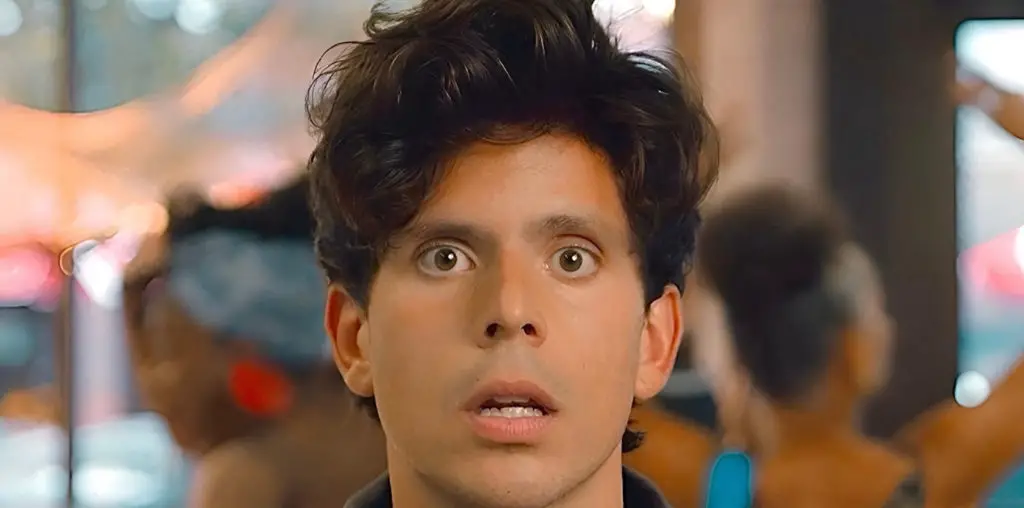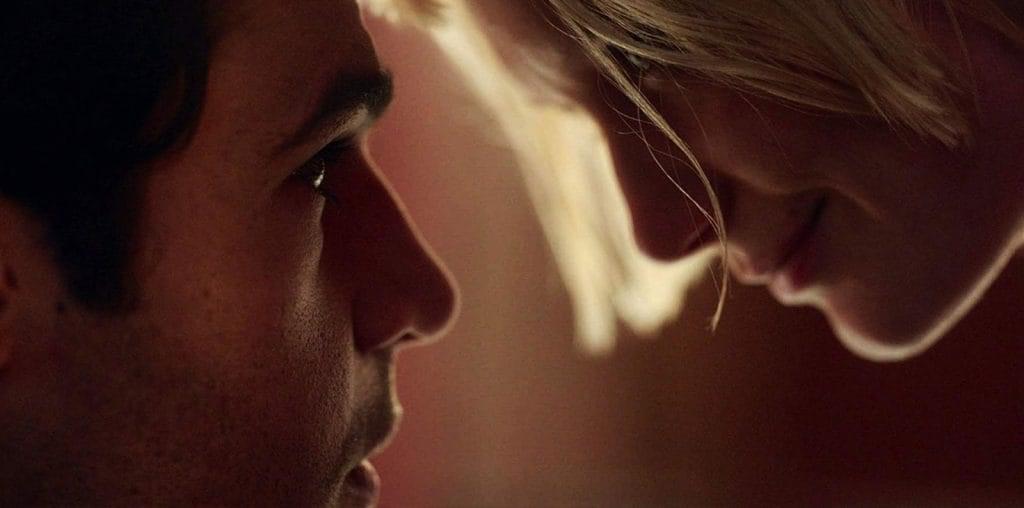
On the Road created a literary sensation and launched the Beat movement, but oddly the book has yet to be made into a film. What has held up a film version of this Kerouac landmark?
The quick answer is that Francis Ford Coppola has held movie rights to the novel for years, and has been planning to film it (perhaps in super-16mm, a less-expensive film stock that could allow for improvisational acting techniques in keeping with Kerouac’s ultra-spontaneous aesthetic) from a screenplay by Russell Banks that calls for a variety of verbal and visual styles meant to echo the story’s mercurial tone. Banks’s screenplay is complete, as is the sale of it to Coppola’s company, so it’s unclear why Coppola keeps delaying and delaying at this point.
To give some more background, interest in filming On the Road goes back to the book’s original publication, and my earlier book on the Beats and American movies, Mad to Be Saved: The Beats, the ’50s, and Film, gets into this. I quote: The publication of On the Road by Viking Press in 1957 was followed by a good deal of critical controversy, and also by a good deal of interest in the motion picture rights to Kerouac’s spontaneous-prose odyssey. Warner Bros. offered $110,000 for them, and according to a letter from Kerouac to Cassady, the studio wanted Kerouac to play the Sal Paradise role; but Kerouac’s literary agent, Sterling Lord, received word that Paramount and Marlon Brando were also interested, and decided to demand $40,000 more. Word later arrived that Brando considered the novel too “loose” for Hollywood treatment, whereupon Kerouac vainly tried to revive the actor’s interest with a letter describing how he would adapt it to the screen. While he was at it, he took the opportunity to mention his ideas for bringing all the film and theater of America “up to par with her Divine Poets”…as he colorfully (and self-congratulatorily?) phrased it.
Although nothing came of this letter, Hollywood renewed its enthusiasm for Beat matters in general and On the Road in particular when Kerouac submitted The Dharma Bums for publication. Jerry Wald of Twentieth Century-Fox contacted Kerouac about an On the Road screenplay consultation, and Brando (back on the scene) asked Lord not to sell the film rights until he could submit a bid. Wald was apparently serious about adapting On the Road, but he wanted to echo “The Wild One”–which had earned much attention for Brando and others–by making a movie more brutal than Kerouac’s novel; he particularly wanted the Dean Moriarty character (a surrogate for Cassady) to die in an automobile crash at the end, which would allow the movie to capitalize on the real-life death of actor James Dean, who coincidentally shared Cassady’s birthday.
Kerouac was distressed with some journalists and intellectuals who insisted on linking Beat attitudes with hostility and even violence. (Hollywood filmmakers made this link too, of course, in such movies as “The Beat Generation” and “A Bucket of Blood.”) Norman Podhoretz, for example, had asserted that the Beat ethos “shades off into violence and criminality, main-line drug addiction and madness.” Protesting that “peace” and “tenderness” were his priorities, Kerouac declared that he would allow no film containing “cruelty” to be made from any of his books. Wald subsequently shifted his attention from On the Road to a request for an original screenplay on a new subject.
A few months into 1958, the film rights to “The Subterraneans” went to MGM for $15,000 and Kerouac agreed to sell On the Road to the small Tri-Way Productions for $10,000 more, far less than his agent had dreamed of not long before. Kerouac received only ten percent of this modest sum before the production company–having commissioned a screenplay from Gene Du Pont and enlisted Mort Sahl, Cliff Robertson, and Joyce Jamison to play Dean, Sal, and Marylou, respectively–went defunct.
With the novel still unfilmed, Robert Frank and Alfred Leslie decided they would like to complete their already started film trilogy with an On the Road adaptation; but Leslie felt that so much on-location filming would be impracticable, the rights would probably have been out of their price range anyway, and Kerouac was apparently reluctant to put the property into the hands of such inexperienced filmmakers. By the end of the ’50s, it appeared On the Road might never arrive on the theatrical screen. Television producers were also interested in the novel’s possibilities, though. Kerouac appears to have been wary about parting with the rights on their terms, but CBS sidestepped any such problem by enlisting veteran TV writer Stirling Silliphant to concoct “Route 66,” in which the 1949 Hudson of Dean and Sal became the 1960 Chevrolet Corvette of Buzz and Todd, who roamed the American roadways on a weekly basis in search of “a place where we really fit–a kind of a niche for ourselves, you know?” as Buzz puts it in a mid-series episode.
It is a little-noted fact that Kerouac himself had no fondness for driving, the myths fostered by On the Road notwithstanding. In keeping with his rejection of violence in Beat-related material, he was even less fond of the violence–mild though it was by later standards–in “Route 66,” which he felt was obviously influenced by his books and public persona. (It did not escape notice that George Maharis bore a distinct resemblance to Kerouac, and way have received his starring role for this reason.) Determined to act on his outrage, Kerouac recruited two lawyers to sue the producers for plagiarism; but both advised him that there was “insufficient evidence.”
MGM made substantial changes in their film version of Kerouac’s “The Subterraneans,” not the least being the rewriting of an interracial romance into a standard tale of white lovers. Was Kerouac ever quoted on how he felt about the way the studio changed his book for the film version?
I can’t recall any direct quotes from Kerouac on this subject, but Dennis McNally reports in his Kerouac biography Desolate Angel that Kerouac found “utterly repugnant” the suggested violence in the movie scene where Jack/George Peppard defends Mardou/Leslie Caron with a beer bottle in his hand. This dovetails with other evidence that Kerouac had a very conservative view of violence in film and literature alike, in keeping with his Buddhist beliefs and other influences on his thought.
Beyond the independent film “Pull My Daisy,” were the Beat writers ever actively involved in the creation of films, either indie productions or Hollywood releases? And did the studios ever actively pursue Kerouac, Burroughs and the others to write screenplays based on their books?
The quick answers are “not much” and “not really.” But there are movies with direct Beat input. Kerouac composed the “screenplay” of “Pull My Daisy,” which is based in part on his unproduced play “The Beat Generation” and includes Ginsberg and Gregory Corso in the cast, by watching the footage Frank and Leslie had shot while listening to jazz through earphones and improvising a narration that included (virtually) all the dialogue for all the characters. Burroughs was actively involved in a handful of avant-garde shorts by Antony Balch, mostly made in 1963: “Towers Open Fire,” with Burroughs appearing in and narrating a story of science-fiction paranoia based loosely on his Nova Mob mythos; “The Cut-Ups,” a non-narrative film edited in a disjunctive style inspired by Burroughs’s own cut-up and fold-in writing techniques; and “William Buys a Parrot,” far less interesting. (Balch also made “Bill and Tony,” with himself and Burroughs, in 1972.) Burroughs has also acted in films as different as “Drugstore Cowboy” and “It Don’t Pay to Be an Honest Citizen,” and has played himself in various documentaries; and his novel-in-screenplay-form, “The Last Words of Dutch Schultz,” was made into a Dutch short with Rutger Hauer about three years ago. And of course David Cronenberg used Burroughs’s novel “Naked Lunch” as the basis for his eponymous (and in my view disappointing) film.
As for Ginsberg, there was a period in the 1970s when it seemed there was a federal statute mandating that no avant-garde short could be legally produced without at least one shot of Ginsberg capering, cavorting, or just sticking his face in the camera! He also appears as an actor in a few features, most notably “Chappaqua” and “Renaldo & Clara,” which marked Bob Dylan’s feature-directing debut. (For more on that movie, see my essay “Renaldo & Clara Meet John Cage: Aleatory Cinema and the Aesthetics of Incompetence,” www.sensesofcinema.com.) In addition, Ginsberg and Kerouac are apparently among the sexed-up performers in Andy Walhol’s rarely screened 1964 movie “Couch,” but I haven’t spotted them myself.
Many films and TV shows of the late 1950s and early 1960s poked fun at the Beat culture. Were there any productions from this era which actually took the Beat scene seriously?
Not really. I suppose the TV series “Route 66” comes closest.
In creating your new book, did you learn anything new or different about the Beat culture that was either new to you or was something you previously overlooked?
Screening the Beats is primarily a book of critical analysis and Beat-inspired riffing, so the main thing I learned is how flexible, mercurial, and inexhaustible the Beat sensibility truly is. My earlier Beat book, Mad to Be Saved, was more of a research project (based on my Ph.D. dissertation, in fact) and in writing that one I learned a zillion facts and possibilities that were as new to me as they were (often) exhilarating to find out about.

